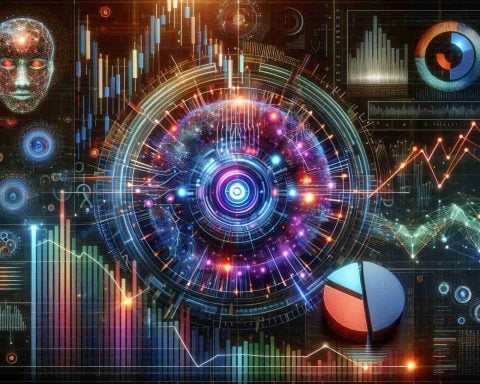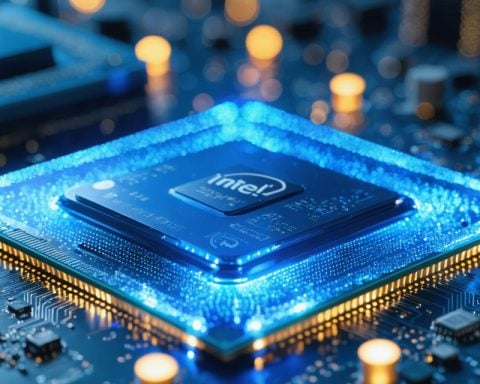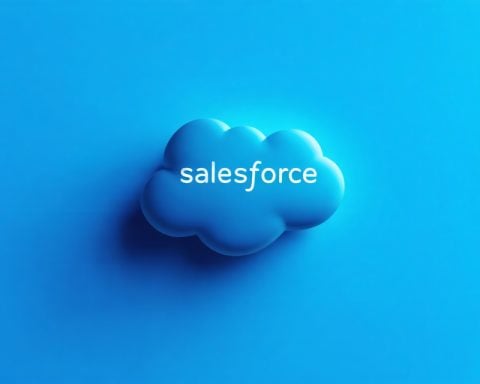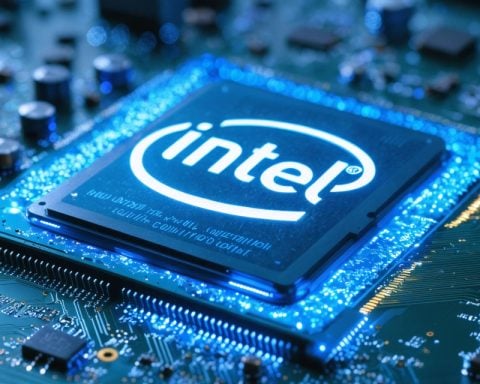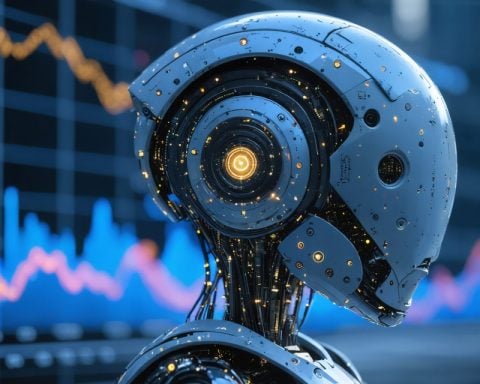- DeepSeek leveraged older NVIDIA GPUs, training an AI model efficiently for $5.6 million, impacting NVIDIA’s stock.
- Despite this, major companies like Amazon, Google, and Meta plan extensive investments in NVIDIA hardware by 2025.
- Google CEO Sundar Pichai highlights a shift towards inference processing, sustaining demand for advanced NVIDIA chips.
- NVIDIA’s revenue is projected to soar to $196 billion by fiscal 2026, driven by data center growth and advancing GPU technology.
- New GB200 GPUs offer 30-fold faster AI speeds, confirming NVIDIA’s innovative edge despite recent market fluctuations.
A new player, DeepSeek, has stirred the tech world’s pot with an astonishing revelation. By leveraging older NVIDIA GPUs, the Chinese startup trained its AI model for a mere $5.6 million. This unexpected news sent NVIDIA’s stock sliding, leaving it 12% shy of its record peak.
Amidst these tremors, giants like Amazon, Google, and Meta emerge as steadfast beacons. Their 2025 spending plans—vaulting as high as $100 billion for Amazon alone—signal an undeterred demand for cutting-edge NVIDIA hardware. Google, in particular, escalates its investment, powering data centers with advanced chips, suggesting the AI revolution shows no signs of cooling.
The narrative gains a richer hue with insights from Google’s CEO, Sundar Pichai. He underscores a pivotal shift: the computing workload is gravitating more towards inference. This migration promises sustained appetite for NVIDIA’s arsenal. Mark Zuckerberg of Meta concurs, emphasizing that chips remain vital despite waning training demands.
Wall Street’s chorus of confidence paints an optimistic tableau for NVIDIA. An anticipated leap to $196 billion in revenue by fiscal 2026—a gigantic 52% growth—emboldens this vision. The company’s present financial health fortifies such forecasts. A recent report of $128.6 billion in expected 2025 revenue, largely from its bustling data center segment, reinforces NVIDIA’s prowess.
Riding this wave are NVIDIA’s latest technological marvels. Its GB200 GPUs, boasting 30-fold faster AI speeds, are flying off the shelves. History suggests that past dips in stock performance have led to robust rebounds—offering investors a glimmer of hope.
In the midst of market volatility, NVIDIA stands resilient. Its dance with DeepSeek may have introduced a momentary shift, but the company’s horizon, punctuated by innovation and strategic alliances, remains bright.
NVIDIA’s Latest Moves: A Game-Changer in AI Computing?
How-To Steps & Life Hacks: Leveraging Older GPUs
For those intrigued by DeepSeek’s strategy of utilizing older NVIDIA GPUs, here are some steps on how similar organizations or enthusiasts can do this efficiently:
1. Assessing Requirements: Begin by identifying the specific AI workloads your organization needs to handle. This can range from image processing to natural language understanding.
2. Inventory Evaluation: Examine your current GPU assets and their specifications. Determine which older models are still viable for your needs.
3. Optimization Techniques: Use software optimizations and libraries such as CUDA and cuDNN to maximize the performance of older GPUs.
4. Energy Efficiency Analysis: Consider the energy consumption and cost savings of using older GPUs. Tools like NVIDIA SMI can help monitor performance and efficiency.
5. Scaling and Integration: Plan a strategy to integrate these assets into your existing infrastructure and scaling as required.
Real-World Use Cases
Organizations are increasingly recognizing the benefits of AI advancements. Real-world applications where leveraging older GPUs can be advantageous include:
– Education Sector: Universities can use older GPUs for AI experiments, avoiding substantial initial capital costs.
– Startups in Developing Economies: Smaller startups can harness affordable, older GPUs without compromising on model training capabilities.
– Healthcare: AI-driven diagnostic tools analyzing medical imaging can still achieve efficient results using older hardware.
Market Forecasts & Industry Trends
Despite a brief market flutter due to DeepSeek’s announcement, the demand for NVIDIA’s latest technologies remains robust.
– Projected Growth: The AI hardware market, which includes GPU assemblies, is expected to grow at a CAGR of over 30% by 2030.
– AI Adoption: With ubiquitous AI integration across industries, NVIDIA’s revenue is anticipated to balloon, driven by both legacy and cutting-edge hardware.
Reviews & Comparisons
Comparing NVIDIA’s older GPU models with the latest:
– Older Models (e.g., GTX Series): Cheaper with a solid track record in handling less-intensive AI workloads.
– Latest Models (e.g., GB200 Series): Superior in speed and efficiency with enhancements in neural network processing power.
Controversies & Limitations
– Ethical Concerns: The use of older GPUs in sensitive applications like surveillance can raise privacy issues.
– Performance Limits: Older GPUs, while cost-effective, cannot match the AI training speeds of newer models, which might limit certain advanced applications.
Security & Sustainability
– Security: Older GPUs sometimes lack the latest security patches, so ensure firmware updates and software patches are regularly applied.
– Sustainability: By utilizing older GPUs, organizations contribute to reduced electronic waste, promoting a more sustainable approach.
Actionable Recommendations
– Evaluate and Optimize: Regular evaluation of infrastructure to balance cost versus performance.
– Stay Informed: Keep abreast of AI trends and NVIDIA’s contributions by following industry reports and engaging in online forums.
– Balance New & Old: Combine older GPUs with new AI innovations where possible to optimize cost and performance.
For ongoing updates on NVIDA’s technology and trends, visit link name.
In conclusion, while DeepSeek has shown a novel approach to AI model training, the demand for NVIDIA’s innovative products remains undeterred, with a blend of legacy systems and groundbreaking technology offering diversified opportunities across sectors.








